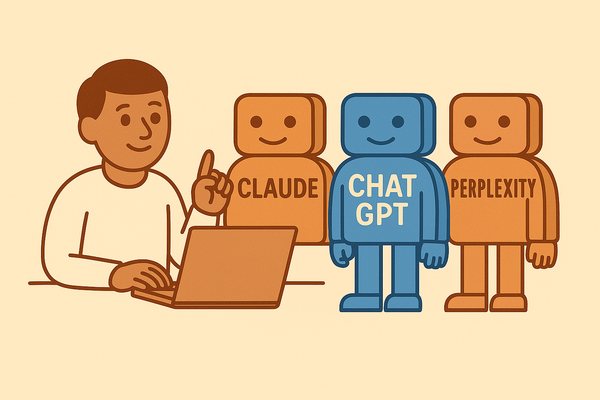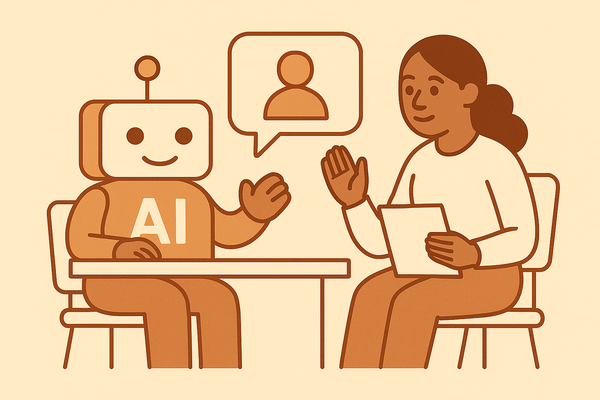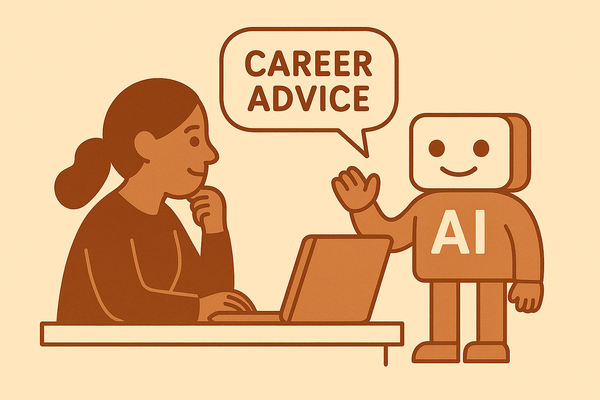MCP for HR: Why Model Context Protocol Matters for Your AI Strategy
The technical shift every HR tech leader needs to understand.
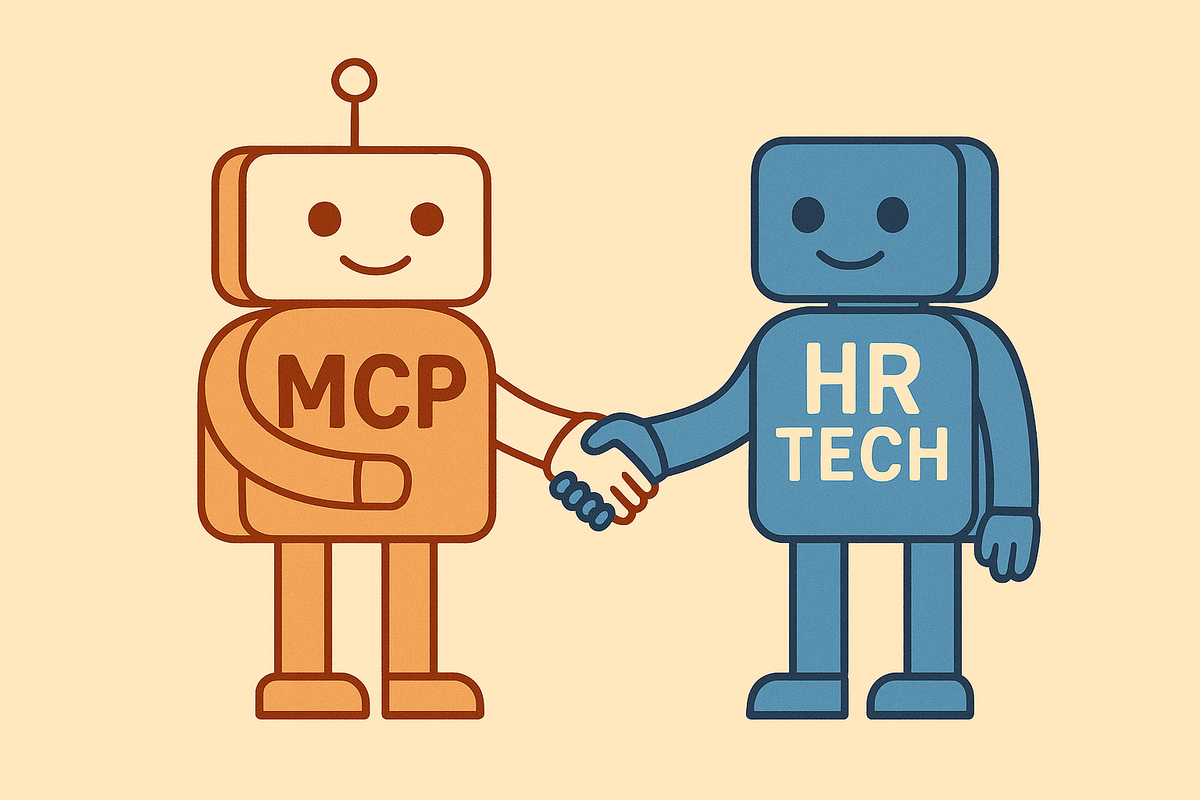
The Reality You Know Too Well
You’ve built up a solid HR tech stack over the years. You’ve got your core HRIS, an ATS for recruiting, performance management platform, employee engagement tools, plus payroll systems, etc etc. Lots of tools!
Each of them is also getting smarter. Your ATS now has AI-powered resume screening. Your HRIS might be able to predict flight risk. It’s exciting to see AI capabilities showing up everywhere.
But you’ve probably experienced this: these AI features are trapped inside each individual tool. Your ATS can screen resumes really well, but it has no idea what’s happening in your performance management system. Your engagement platform can spot trends in survey data, but it can’t see compensation information or promotion timelines that might explain those trends.
When you want to connect these insights you’re back to the same old integration challenges you’ve been dealing with for years.
Here’s what you might not know: this integration complexity is about to become a much bigger problem. LLMs, that’s Large Language Models, the AI tech powering tools like ChatGPT and Claude, are moving beyond just analyzing data to actually connecting with and using your tools directly. This shift from AI that just analyzes and recommends to AI that actually does things like creates records, sends emails, triggers workflows is what makes AI truly agentic.
That’s where the Model Context Protocol comes in. MCP was introduced by Anthropic in November 2024 as an open standard. It solves this fundamental integration challenge, and it’s going to completely change how AI works with your HR tech stack.
Why Your Current Integration Approach Won’t Work for LLMs
You already know integration challenges. Every time you want to connect two systems, someone needs to figure out APIs, authentication, data formats. And when vendors update their APIs? Things break and need fixing. It's expensive and time-consuming, but you've built a functioning ecosystem.
But LLMs connecting to your tools? That’s a fundamentally different problem.
Think about how your current integrations work. Your ATS sends new hire data to your HRIS. Your performance management system syncs ratings to your compensation platform. These are scripted, predictable workflows. Data moves from point A to point B in ways you’ve predetermined.
LLMs need something completely different. They need to figure out what tools can do and how to use them on the fly. An LLM doesn’t just want to move data around. It wants to understand: “What can this HRIS do? How do I check someone’s PTO balance? Can I update their contact information? What reports are available?”
This is where things get complicated fast. If you want to connect 1 LLM to 10 tools using your current approach, you need 10 custom integrations. Add another LLM? That’s another 10 integrations. Add a third? Another 10. The complexity explodes exponentially.
And it gets even more complex. LLMs don’t just want to read data. They want to take action. Update records, trigger workflows, send notifications. Each action needs its own development work, testing, and maintenance.
Your current integration approach works fine for predictable data flows between systems you control. But it wasn’t designed for intelligent systems that need to discover and use capabilities across your entire tech stack dynamically.
This is why most LLMs today can only work with data you manually export and upload to them.
What MCP Actually Is and How It Solves This Problem
The Model Context Protocol does something pretty clever: it creates a universal language that any LLM can use to connect with any tool.
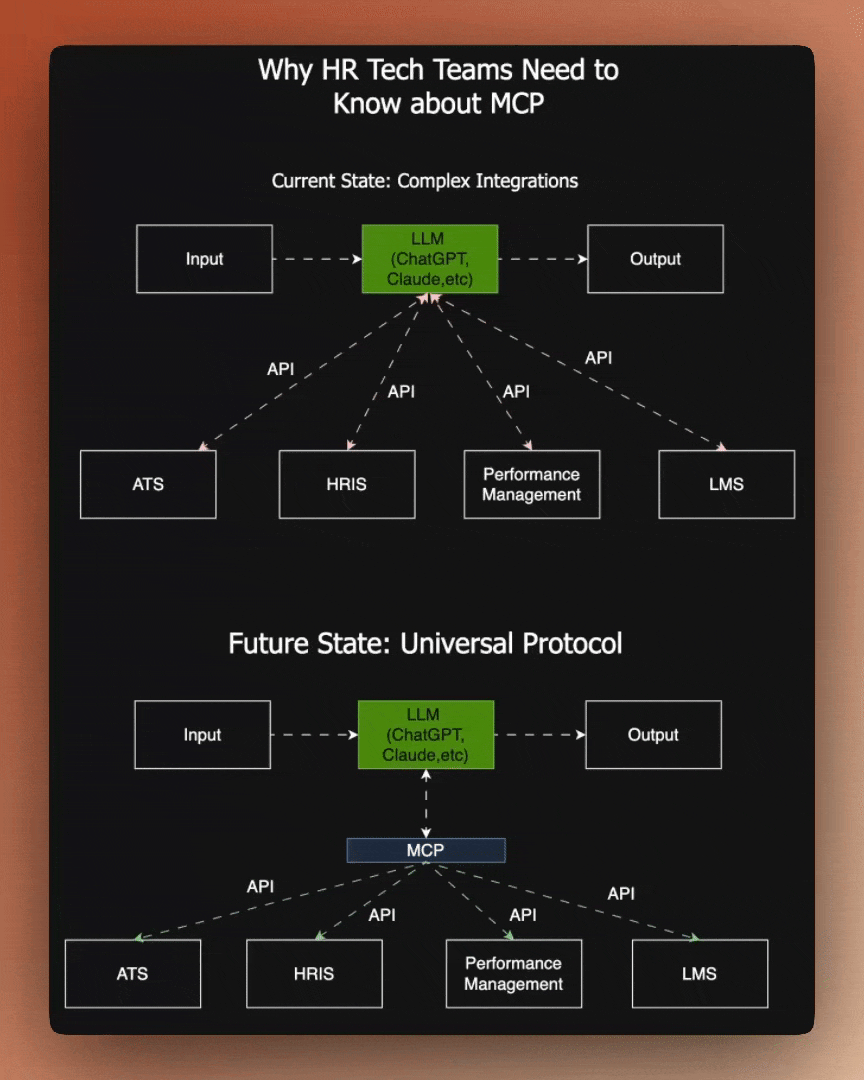
Here’s how it works. Instead of building custom integrations between every LLM and every system, MCP acts like a translator. Your tools expose their capabilities through MCP servers. LLMs connect through MCP clients. The protocol handles all the communication in between.
This changes the integration math completely. Instead of needing 10 custom integrations to connect 1 LLM to 10 systems, each tool just needs its own MCP server and the LLM needs one MCP client. Add another LLM? Just 1 more MCP client. Add another system? Just 1 more MCP server. The complexity grows linearly instead of exploding.
Here’s what makes MCP different from other integration standards: it’s built for how LLMs actually work. When an LLM connects to an MCP server, it can automatically figure out what that system can do. The server basically tells the LLM: “I can check employee records, update contact information, generate org charts, and calculate PTO balances.” The LLM doesn’t need to know any of this ahead of time.
This is why every major AI provider jumped on MCP so quickly. They all saw the same problem: LLMs needed a standardized way to connect with tools, and the old custom API approach just doesn’t scale.
Why This Matters for Your AI Strategy
MCP isn’t just another technical standard. It’s the infrastructure that will determine which organizations can effectively deploy AI in their HR ops and which ones will struggle.
The shift is happening now. Platforms like Workday, SAP SuccessFactors, ADP, UKG Pro Recruiting, and BambooHR have started building MCP servers for their systems. They see the same pattern you probably recognize: organizations want AI that can actually work with their systems, not just analyze exported data. The custom integration approach that worked for traditional data flows doesn’t scale for LLMs that need dynamic access to multiple systems.
What this means is that organizations that understand MCP and begin evaluating their HR tech stack for MCP readiness will be positioned to deploy AI capabilities as soon as their vendors support it. Organizations that don’t will be stuck with fragmented AI tools that can’t access the data they need to be truly useful.
The transition is going to happen whether you're ready or not. The adoption by every major AI provider and the growing number of HR platform implementations makes that pretty clear. The real question is whether your organization will be ready to take advantage of it.
If you’re thinking about next steps, start conversations with your vendors about their MCP roadmaps. Begin thinking about which manual processes could be automated if AI could easily access and coordinate between your systems. Consider how your integration strategy needs to evolve from custom APIs to MCP-ready infrastructure. Need more support with your AI strategy for your HR team? Check out efora.io
The organizations that get this right will have AI that can actually improve their operations. The ones that don’t will have expensive chatbots that can’t do much beyond answer basic questions. Which side will you be on?

